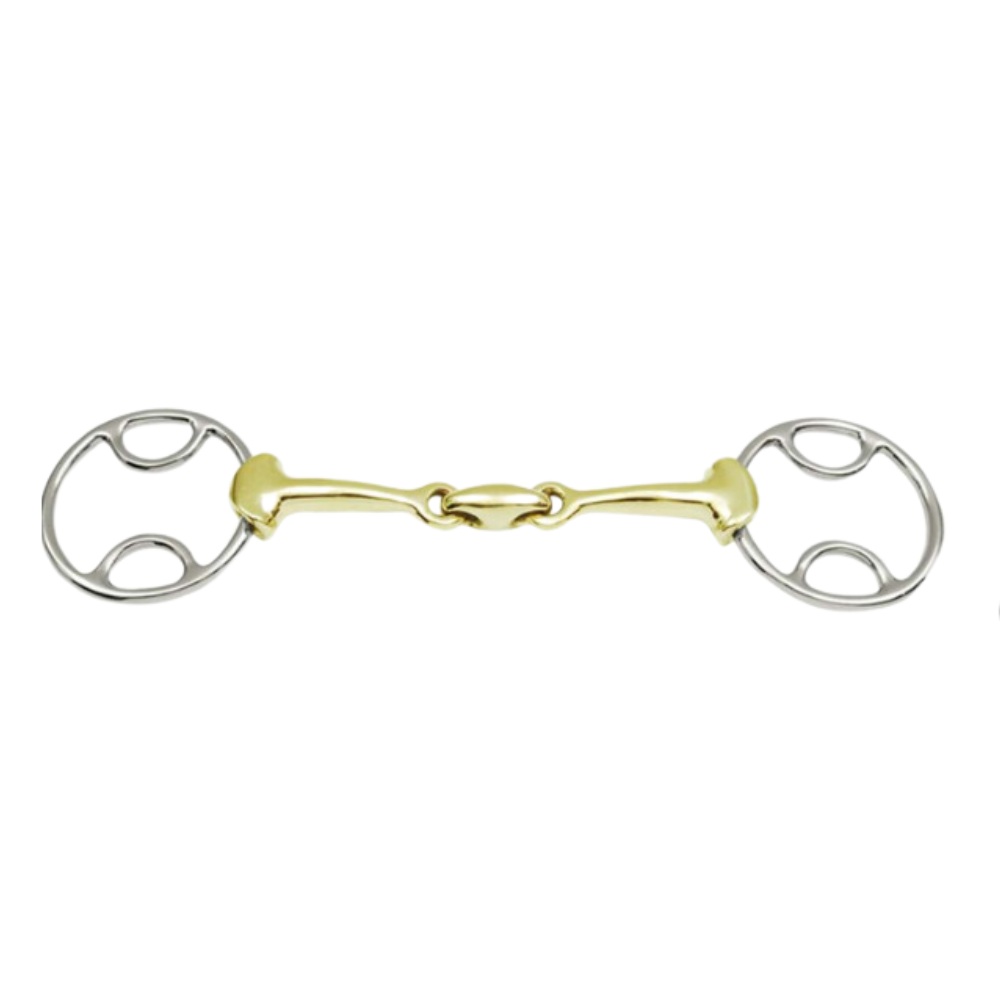Loose ring bits are a common type of horse bit used in English riding disciplines. They are characterized by their loose rings on either side of the mouthpiece, allowing the bit to move freely within the horse’s mouth. Let’s delve into the specifics of loose ring bits:
Design:
- Mouthpiece: The central part of the bit that sits in the horse’s mouth. It can vary in design and material, with options including snaffle, jointed, mullen, or twisted mouthpieces.
- Loose Rings: The rings on either side of the mouthpiece are not fixed to the bit, allowing them to move independently. This freedom of movement encourages the horse to accept the bit more readily and can help prevent the horse from leaning or bracing against it.
Functionality:
- Direct Rein Aids: When the rider applies pressure to one rein, the loose ring allows the mouthpiece to rotate slightly, providing a direct and clear signal to the horse.
- Encourages Salivation: The loose rings encourage the horse to play with the bit and produce saliva, promoting acceptance and softness in the mouth.
- Sensitivity: The loose rings can make the bit more sensitive and responsive to the rider’s aids, making it suitable for horses that are light in the mouth or require subtle communication.
Benefits:
- Flexibility: The loose rings allow for greater flexibility and movement in the horse’s mouth, reducing the likelihood of the horse feeling trapped or restricted by the bit.
- Acceptance: Many horses find loose ring bits more comfortable and palatable due to the freedom of movement they provide, leading to better acceptance and responsiveness.
- Gentle Communication: The design of loose ring bits enables gentle and precise communication between the rider and horse, making them suitable for a wide range of riding disciplines and levels of training.
Considerations:
- Potential for Pinching: The loose rings can occasionally pinch the horse’s lips if they are not properly adjusted or if the bit is used with a bridle that has narrow cheekpieces. Using bit guards or keepers can help prevent this.
- Maintenance: Due to their moving parts, loose ring bits may require regular cleaning and maintenance to ensure smooth operation and prevent rust or corrosion.
Types of Mouthpieces:
- Snaffle: A basic mouthpiece with no leverage, suitable for direct rein aids.
- Jointed: Features a joint in the middle, allowing for more mobility and flexibility.
- Mullen: A straight, solid mouthpiece that applies pressure evenly across the tongue.
- Twisted: Has a twisted design, providing additional pressure and severity.








Reviews
There are no reviews yet.